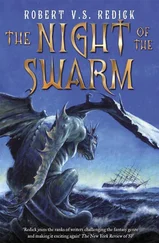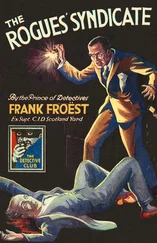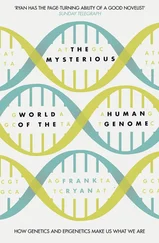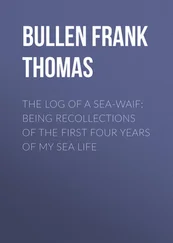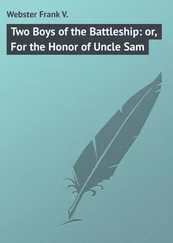Silently they left the ruins of their home and walked along the other side of the river, away from Trondheim.
Cataclysm
The wave kept spreading outwards. It flooded the east coast of the UK and the west coast of Denmark. Between Edinburgh and Copenhagen the shelf was unusually shallow. Dogger Bank loomed up from the seabed, a relic of the time when the North Sea was still partly dry land. It had once been an island, its shores home to numerous animals that crowded together as the tides kept rising, until eventually they drowned. Now it lay thirteen metres below sea level, and it forced the surging wave to rear higher.
South of Dogger Bank the shelf was crammed with the oil platforms that lined the south-east coast of Britain, the northern shores of Belgium and the Netherlands. The wave raged more ferociously than it had further north, but the uneven surface of the shelf, with its sand bars, ridges and chasms, acted as a brake. The Frisian Islands were inundated, but the wave lost some of its momentum so Holland, Belgium and northern Germany were spared its full force. By the time it reached The Hague and Amsterdam, its speed had dropped to a hundred kilometres per hour, which was still enough to destroy large sections of coastline. Hamburg and Bremen lay further inland, but the mouths of the Elbe and the Weser were as good as unprotected. The tsunami raced along the rivers, flooding the surrounding area before it reached the cities. In London the Thames rose sharply, breaking its banks and smashing ships into bridges.
The surging water spilled into the Strait of Dover, shaking the coastline to Normandy and Brittany. Only the Baltic emerged unscathed. The water off the coast of Copenhagen, Kiel and the other Baltic cities was choppier than usual, but the tsunami didn't reach them, shuttling between the Skagerrak and Kattegat until it collapsed. Further north the devastation continued unabated as the tsunami slammed into the shores of Iceland, Greenland and Spitsbergen.
After the disaster, the Olsens had headed straight for higher ground. Later on, when Knut Olsen thought about it, he couldn't say why. He was the one who'd suggested it. Maybe he dimly recalled a film he'd seen about tsunamis or an article he'd read, or maybe it had been intuition. Either way, the decision to flee had saved their lives.
Most people who survived the coming and going of a tsunami were killed all the same. When the first wave was over, they returned to their villages and houses to see what remained. But a tsunami was made up of a succession of waves. The large intervals between peaks meant that the second wave hit when people thought they were safe.
It was no different now.
Barely a quarter of an hour later, the second wave struck as forcefully as the first, and completed the devastation. The third, which hit the coastline twenty minutes later, was only half as high, then came a fourth, and after that, nothing.
In Germany, Belgium and the Netherlands, the evacuation measures hadn't come to much, despite the extra warning time they'd been given. Nearly everyone owned a car, though – and they'd all had the bright idea of using it. Within ten minutes of the news flash, the roads were jammed. Then the wave came along and the traffic was cleared.
An hour after the underwater avalanche, the offshore oil industry in northern Europe had ceased to exist Almost all of the coastal towns in the surrounding area had been ravaged or destroyed. Hundreds of thousands of people had lost their lives. Only Iceland and Spitsbergen, two sparsely populated areas, had escaped without fatalities.
During their joint expedition, the Thorvaldson and the Sonne had established that the worms were destabilising the hydrates along the length of the slope, as far north as Tromso. The landslide had happened in the south. Because of the effects of the tsunami no one had time to consider whether the northern slope was in danger of collapsing too. Gerhard Bohrmann might have been able to provide an answer – but he had no means of identifying the location of the slide. Not even Jean-Jacques Alban, who had succeeded in getting the Thorvaldson far enough out to sea to escape the tsunami, had any idea of what had taken place.
THE SOUND OF EXPLOSIONS echoed across the sea, bouncing off the ruins of the towns. Roaring helicopters, wailing sirens and loudspeaker announcements mixed with the screams of survivors. It was a cacophony of misery, and at its heart was the leaden silence of death.
Three hours went by, and the last wave rolled back into the sea.
Then the northern slope collapsed.
PART TWO
CHATEAU DISASTER
From the annual reports of international environmental organizations
In spite of the 1994 ban, the dumping of radioactive waste in the world's oceans is ongoing. Greenpeace divers examining the seabed at the mouth of the discharge pipe of the French reprocessing plant in La Hague found levels of radioactivity seventeen million times higher than those in uncontaminated waters. Crabs and kelp off the Norwegian coast have been found to be contaminated with the radioactive isotope tech-netium-99. Radiation protection experts in Norway identified the source of the pollution as the ageing reactors of the British nuclear reprocessing factory in Sellafield. However, American geologists stick by their proposals for highly radioactive waste to be buried under the ocean. The scheme involves dropping nuclear containers kilometres into the seabed through pipes, then covering them with sediment.
From 1959 onwards, the former Soviet Union dumped large quantities of radioactive waste, including disused nuclear reactors, in the Arctic Ocean. Now over a million tonnes of chemical weapons are rusting away on the ocean seabed at depths of between 500 and 4500 metres. Particular concern has been raised over metal containers of Russian nerve gas that were sunk in 1947 and have been corroding ever since. 100,000 barrels of radioactive waste of medical, technological or industrial origin are known to be lying on the seabed off the coast of Spain. Plutonium from nuclear testing in the South Seas has been detected in the mid-Atlantic at depths of over 4000 metres. The UK Hydrographic Office lists 57,435 wrecks on the ocean bed, including the remains of numerous American and Russian nuclear subs.
The environmental toxin DDT poses a particular danger to marine organisms. The pollutant is carried by currents and spread across the globe, where it accumulates in the ocean food chain. PBDE, a chemical used as a flame retardant in televisions and computers, has been found in the blubber of sperm whales. Ninety per cent of swordfish are contaminated with unsafe levels of mercury, while twenty-five per cent are also polluted with PCBs. Female dog whelks in the North Sea are developing male genitalia. The culprit is thought to be tribu-tyltin, a chemical contained in anti-fouling paint.
Oil wells have been shown to contaminate a surrounding area of over twenty square metres, of which one third is entirely barren of life.
Magnetic fields produced by deep sea cables interfere with the homing instincts of salmon and eels. The electromagnetic smog is also harmful to larvae.
Fish stocks are in decline, while algal blooms flourish. Meanwhile, Israel has persisted in its refusal to ratify the convention banning the disposal of industrial waste in maritime waters. Haifa Chemicals dumped 60,000 tonnes of toxic sludge in 1999 alone. The pollutants, including lead, mercury, cadmium, arsenic and chlorine, are swept away by the current, contaminating the coasts of Lebanon and Syria. At the same time, the fertiliser industry in the Gulf of Gabes continues to pump 12,800 tonnes of phosphogypsum into the sea every day.
Seventy of the world's two hundred most commonly exploited fish species are endangered, according to the Food and Agriculture Organisation, the FAO, and yet the fishing industry continues to expand. In 1970, thirteen million people earned their livelihood from fishing. By 1997 the number had reached thirty million. Bottom-trawl nets, commonly used to catch cod, sand eels and Alaskan salmon, have a devastating impact on marine life, quite literally sweeping away ecosystems. Mammals, seabirds and other marine predators are robbed of their prey.
Читать дальше


